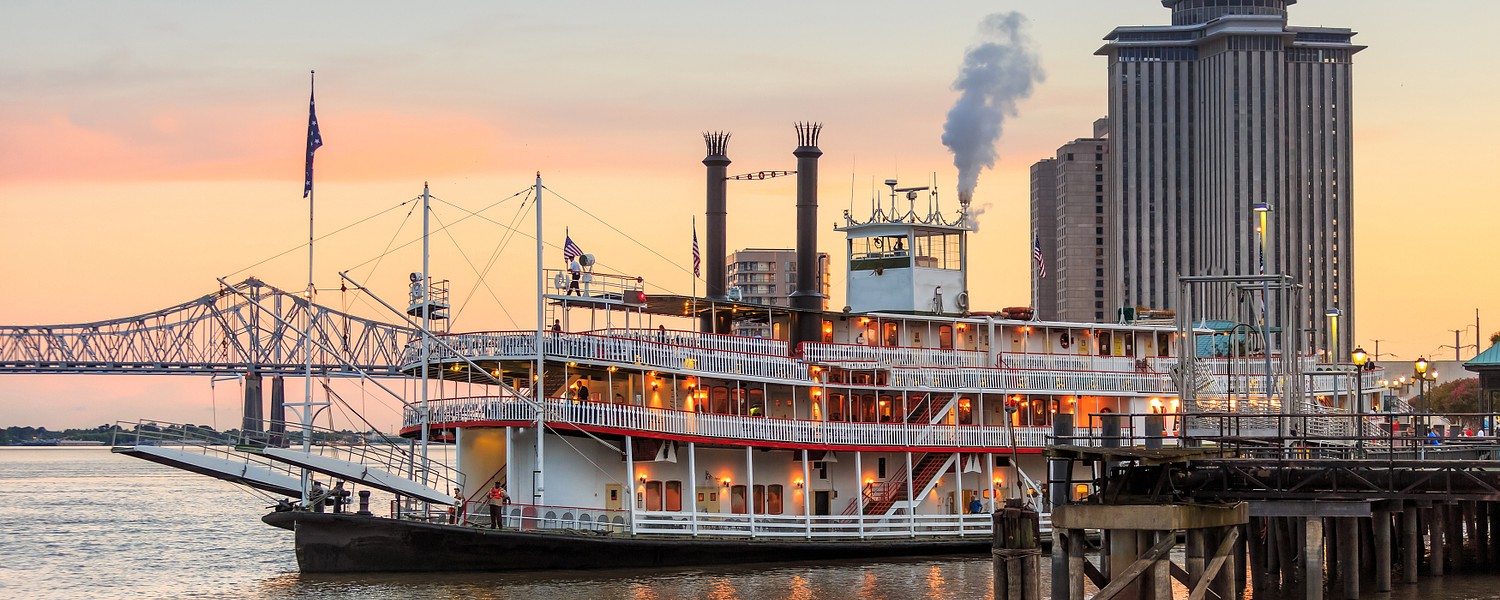
Provided by:
f11photo/Shutterstock.com

Our travel guides are free to read and explore online. If you want to get your own copy, the full travel guide for this destination is available to you offline* to bring along anywhere or print for your trip.
*this will be downloaded as a PDF.Price
€4,95
The City
The guide was updated:
New Orleans is a city where history seeps from every corner, brick, and building. The Crescent City, as it is known, has undergone transformation upon transformation to become the vibrant hub of tourism and culture it is today.
With its roots in Spanish and French rule, European influence is still evident in the French Quarter's architecture—from the charming courtyards to the stately, multi-story buildings.
Over the years, thousands of Americans, Germans, Sicilians, Irish, and Haitians have made New Orleans their home, creating a melting pot of cultures that has sometimes boiled over. This cultural tension led to the Americans settling in what is now the Central Business District, seeking distance from the Creoles of the French Quarter. The term "neutral grounds," still used to describe city medians, originates from the Canal Street median, which served as a neutral business zone between the Americans and Creoles. It seems natural that "New Orleans" and "culture" are uttered in the same breath, as the city is awash with passion, verve, and history.
Also nicknamed "The Big Easy," perhaps to contrast with the hustle and bustle of "The Big Apple," New Orleans has maintained its relaxed, easy-going vibe. With its abundant parks, preserves, bayous, and waterways, the city offers a natural escape for both locals and visitors. Cozy cafés and restaurants stand ready to serve up a warm beignet and café au lait, while the sounds of live jazz fill the air each night, embodying the city’s timeless spirit.
With its roots in Spanish and French rule, European influence is still evident in the French Quarter's architecture—from the charming courtyards to the stately, multi-story buildings.
Over the years, thousands of Americans, Germans, Sicilians, Irish, and Haitians have made New Orleans their home, creating a melting pot of cultures that has sometimes boiled over. This cultural tension led to the Americans settling in what is now the Central Business District, seeking distance from the Creoles of the French Quarter. The term "neutral grounds," still used to describe city medians, originates from the Canal Street median, which served as a neutral business zone between the Americans and Creoles. It seems natural that "New Orleans" and "culture" are uttered in the same breath, as the city is awash with passion, verve, and history.
Also nicknamed "The Big Easy," perhaps to contrast with the hustle and bustle of "The Big Apple," New Orleans has maintained its relaxed, easy-going vibe. With its abundant parks, preserves, bayous, and waterways, the city offers a natural escape for both locals and visitors. Cozy cafés and restaurants stand ready to serve up a warm beignet and café au lait, while the sounds of live jazz fill the air each night, embodying the city’s timeless spirit.


